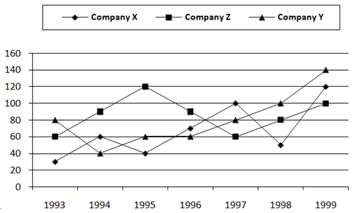DSSSB TGT Natural Science Mock Test - 3 - DSSSB TGT/PGT/PRT MCQ
30 Questions MCQ Test - DSSSB TGT Natural Science Mock Test - 3
Two houses of state legislature in India are
In which year did Ajay Jadeja make his ODI debut?
An object at rest will remain at rest and an object in motion will remain in motion until and unless it is acted upon by an external force. This is Newton's –
In which year, Ashok Mehta Committee was appointed to review the working of Panchayati Raj institution?
The first grammarian of the Sanskrit language was -
With reference to the Earth Observation Satellite (EOS-01), recently launched by the ISRO, consider the following statements:
1. It was launched onboard the Geosynchronous Satellite Launch Vehicle (GSLV).
2. It operates in the Sun-synchronous orbit.
3. It was launched from Abdul Kalam Island, Odisha.
Which of the statements given above is/are correct?
In which city was North India's largest floating Solar project inaugurated?
In which state is BPCL planning to set up a 1 GW renewable energy plant?
In which state will the 7th Nature and Birds Festival begin?
Directions to Solve
In each of the following questions, five words have been given out of which four are alike in some manner, while the fifth one is different. Choose the word which is different from the rest.
Question -
Choose the word which is different from the rest.
Directions to Solve
In each of the following questions find out the alternative which will replace the question mark.
Question -
ZRYQ : KCJB :: PWOV : ?
Directions to Solve
In each of the following questions find out the alternative which will replace the question mark.
Question -
KeaC : CaeK :: XgmF : ?
Directions to Solve
In each of the following questions two statements are given and these statements are followed by two conclusions numbered (1) and (2). You have to take the given two statements to be true even if they seem to be at variance from commonly known facts. Read the conclusions and then decide which of the given conclusions logically follows from the two given statements, disregarding commonly known facts.
Question -
Statements: All the actors are girls. All the girls are beautiful.
Conclusions:
- All the actors are beautiful.
- Some girls are actors.
If A is the brother of B; B is the sister of C; and C is the father of D, how D is related to A?
A, B, C, D and E are sitting on a bench. A is sitting next to B, C is sitting next to D, D is not sitting with E who is on the left end of the bench. C is on the second position from the right. A is to the right of B and E. A and C are sitting together. In which position A is sitting ?
Direction : Study the following question carefully and choose the right answer.
Q: In a certain code RAIN is written as TCKP. How is CLOUD written in that code?
Study the following line graph and answer the questins.
Exports from Three Companies Over the Years (in Rs. crore)

Q. In which year was the difference between the exports from Companies X and Y the minimum?
The following pie-charts show the distribution of students of graduate and post-graduate levels in seven different institutes in a town.
Distribution of students at graduate and post-graduate levels in seven institutes:
Total number of students of graduate level = 27300
Total number of students of post – graduate level = 24700
Q.
Total number of students studying at post-graduate level from institutes N and P is
Study the following line graph and answer the questions.
Exports from Three Companies Over the Years (in Rs. crore)

Q.
For which of the following pairs of years the total exports from the three Companies together are equal?
What is the simple interest for 9 years on a sum of Rs. 800 if the rate of interest for the first 4 years is 8% per annum and for the last 4 years is 6% per annum?
Find the compound interest on Rs. 1000 at the rate of 20% per annum for 18 months when interest is compounded half-yearly.
15 men could finish a piece of work in 210 days. But at the end of 100 days, 15 additional men are employed. In how many more days will the work be complete?
The number of seats in a cinema hall is decreased by 8% and also the price of the ticket is increased by 4 percent. What is the effect on the revenue collected?
A man spends 60% of his income. His income is increased by 20% and his expenditure also increases by 10%. Find the percentage decrease in his saving?
A is working and B is the sleeping partner in a business. A invests Rs. 12,000 and B invests Rs. 20,000. A receives 10% of the profit for managing. The rest is divided in the ratio of their capitals. Out of a total profit of Rs. 9600, what will be the amount received by A?
The sum of three numbers is 98. The ratio of the first two numbers is 2 : 3 and that of the last two numbers is 5 : 8. Find the 2nd number.
Ratio between the lateral surface area and the total surface area of a right circular cylinder is 3 : 5. If the lateral surface area is 1848 sq. m, then volume of the cylinder is (in cubic m).



















